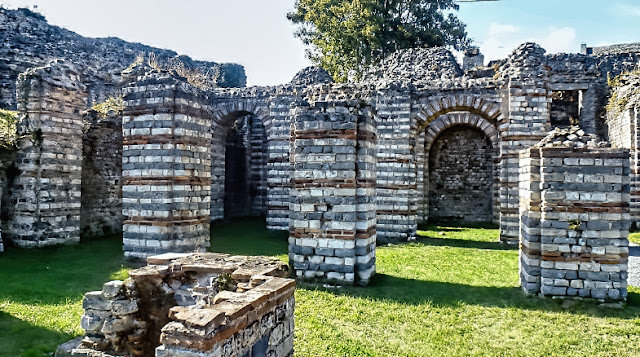Gallo-Roman remains of ancient Bavacum, once the capital for the Nervii tribe in Bavay, France
Gallo-Roman remains of ancient Bavacum, once the capital for the Nervii tribe in Bavay, France.
Local legends point to the city of Bavay's founding by a cousin of Priam fleeing the destruction of Troy in the 12th century BCE. But archaeologists have been unable to find remains dating that far into antiquity. However, the site served as a capital of the Nervii tribe, connecting their city to the capital cities of neighbouring Amiens via Arras, Tongeren, Cassel, Trier in the east and Reims in the south, until their defeat by Julius Caesar during the Gallic Wars. The location then became known as Bavacum (or Bagacum) when it was designated a Roman civitas as the result of a reorganization by Augustus between 16 and 13 BCE. The town became an important commercial junction of seven roads on the trade routes between Germania and the naval port of Boulogne-sur-Mer. During the Claudian period through the dynasty of the Flavians, a forum, thermal baths fed by an aqueduct bringing water from a fountain near Floursies, 20 kilometers away, and other official buildings were constructed. The remains of the largest Roman forum ever discovered in France can still be explored today and Gallo-Roman artifacts from excavations in Bavay, including mosaics, ceramics, bronze figurines, coins, sculptures, tools, millstones, amphora, architectural elements, funerary art, and models are now on display in their Gallo-Roman Museum.
Image: 1) Remains of the Roman forum of ancient Bavacum.courtesy of Trip Advisor contributor GilbertC then digitally enhanced. 2) Sculpture of Hermes recovered from Bavay excavations now at the British Museum courtesy of Wikimedia Commons contributor Jononmac46..





Comments
Post a Comment